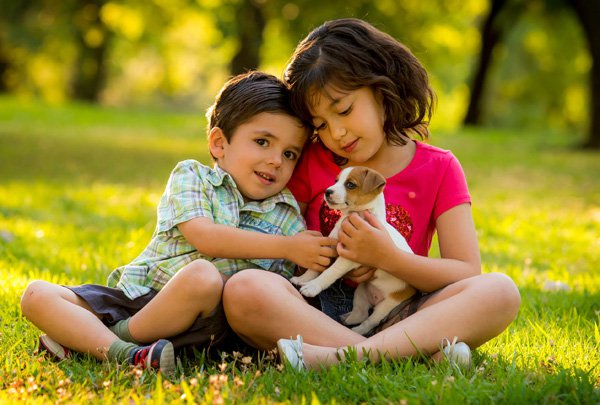
There are a few dog behavioral problems for which a "conventional" approach is ineffective. Such problems are those that trigger an emotional response in canines. For example, your pet may become agitated when a person is riding a bicycle near him, and begin to behave aggressively. Or he might become fearful at the sound of thunder, and cower in a private hiding place until the noise goes away. These and other issues call for desensitization training. It is often combined with counterconditioning.
Below, we'll explain what both phrases means in the context of curbing emotion-driven behavioral problems in dogs. We'll also present a hypothetical desensitization plan so you'll know what is involved, and what to expect.
What Does Desensitization Mean?
This portion of the training program is focused on desensitizing your canine to the stimuli that triggers the unwanted response. It is done by exposing him to that stimuli for short periods of time, and slowly lengthening those periods. The increasing level of exposure gradually makes your dog less sensitive to the trigger, which minimizes his emotional reaction to it in the future.
Exposure during training typically begins on a small scale - much smaller than that which agitates your pet. For example, suppose a person wearing a full uniform (e.g. police officer, firefighter, etc.) prompts his reaction. Desensitization training might begin with a person wearing only the hat. Over time, additional pieces of the uniform may be donned until your canine is exposed to it in its entirety. As mentioned, the length of time to which he is exposed is also increased. Eventually, your dog will become more comfortable around people in uniform.
Counterconditioning Explained
This part of the program focuses on reshaping your canine's perspective of the target stimuli. For example, suppose he becomes fearful whenever he hears thunder. He trains himself over time to associate the sound with something bad - something worth fearing.
With counterconditioning, you would shape his perspective of thunder by providing him with a tasty treat whenever he is exposed to it. Because he enjoys the treats, he will slowly replace his original association (i.e. thunder equals something bad) with a new one (i.e. thunder equals something good). With time, his fear of thunder will dissipate.
Creating A Desensitization And Counterconditioning Plan
When creating a training program, it is important that you take a methodical approach. This helps to ensure consistency. The first step is to identify all relevant parts of the issue. For instance, let's use our canine's problem with people dressed in uniform. Appearance is the trigger, as opposed to scent or sound. It is also likely that your dog's proximity to the person is a factor.
Second, define the features that cause varying levels of response in your canine. With our uniformed person, we can safely assume the closer the person is, the more agitated your pet becomes.
Third, create a tiered plan to desensitizing your dog. For example, our plan might look like the following:
Step 1: Uniformed person standing at 50 feet.
Step 2: Uniformed person standing at 35 feet.
Step 3: Uniformed person standing at 20 feet.
Step 4: Uniformed person standing at 10 feet.
Step 5: Uniformed person standing at 5 feet.
Then, start with the first step. Keep the sessions short during the beginning to limit your dog's exposure to the uniformed person. If he remains calm, give him a treat. If he reacts aggressively, turn him around and draw his attention. As time passes, you'll be able to progress through your plan, and lengthen the sessions at each step. Your dog will gradually become less sensitive to people dressed in uniforms. Moreover, the treats will encourage him to form a new, positive association with them.
Regardless of how successful your desensitization and counterconditioning program is, your canine will need periodic reminder sessions. This training requires patience, but the time you invest will help your dog become a more pleasant companion.
 Online pet shops will meet every demand of your pet!
Online pet shops will meet every demand of your pet!
Online pet shops will meet every demand of your pet!
Online pet shops will meet every demand of your pet!
 Six Symptoms Of Feline Skin Cancer
Six Symptoms Of F
Six Symptoms Of Feline Skin Cancer
Six Symptoms Of F
 Importance of Giving Your Dog the Best Food and Caring
Importance of Giving Your Dog the Best Food and Caring
Importance of Giving Your Dog the Best Food and Caring
Importance of Giving Your Dog the Best Food and Caring
 What difference can a dog make in your life
What difference can a dog make in your life
Do
What difference can a dog make in your life
What difference can a dog make in your life
Do
 Adopting A Pedigree Cat
Adopting A Pedigr
Adopting A Pedigree Cat
Adopting A Pedigr
Copyright © 2005-2016 Pet Information All Rights Reserved
Contact us: www162date@outlook.com